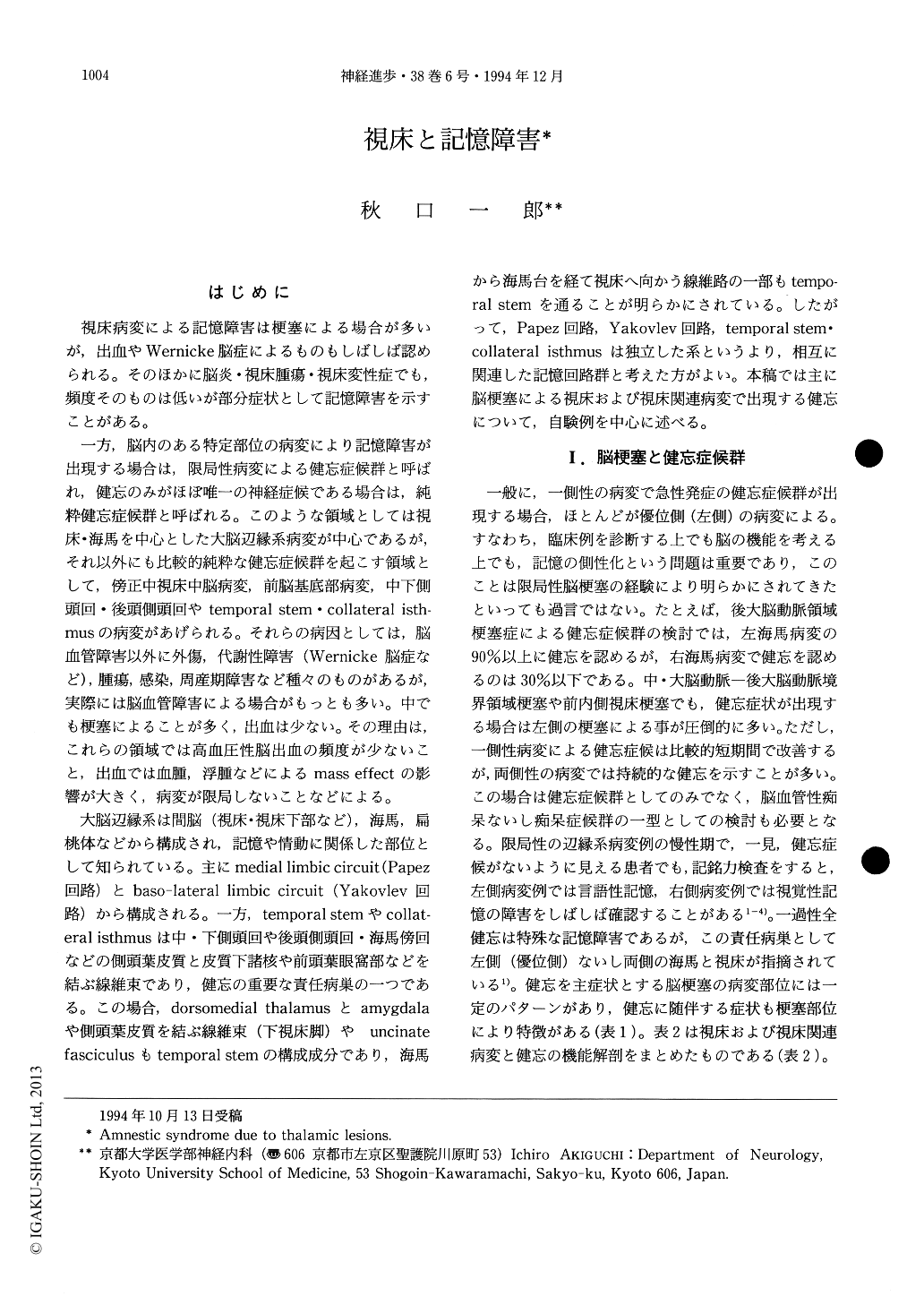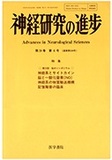Japanese
English
- 有料閲覧
- Abstract 文献概要
- 1ページ目 Look Inside
はじめに
視床病変による記憶障害は梗塞による場合が多いが,出血やWernicke脳症によるものもしばしば認められる。そのほかに脳炎・視床腫瘍・視床変性症でも,頻度そのものは低いが部分症状として記憶障害を示すことがある。
一方,脳内のある特定部位の病変により記憶障害が出現する場合は,限局性病変による健忘症候群と呼ばれ,健忘のみがほぼ唯一の神経症候である場合は,純粋健忘症候群と呼ばれる。このような領域としては視床・海馬を中心とした大脳辺縁系病変が中心であるが,それ以外にも比較的純粋な健忘症候群を起こす領域として,傍正中視床中脳病変,前脳基底部病変,中下側頭回・後頭側頭回やtemporal stem・collateral isthmusの病変があげられる。それらの病因としては,脳血管障害以外に外傷,代謝性障害(Wernicke脳症など),腫瘍,感染,周産期障害など種々のものがあるが,実際には脳血管障害による場合がもっとも多い。中でも梗塞によることが多く,出血は少ない。その理由は,これらの領域では高血圧性脳出血の頻度が少ないこと,出血では血腫,浮腫などによるmass effectの影響が大きく,病変が限局しないことなどによる。
Amnestic syndrome in patients with thalamic lesion most likely results from infarcts in the territory of the perforating arteries of the thalamus. Amnesia in patients with thalamic infarction can be classified into at least three types: that resulting from lesions of the anteromedial thalamus, paramedian thalamomesencephalic region, and anterior thalamic peduncles (including the capsular genu). The differential diagnosis in such cases is straight forward if characteristic clinical manifestations are observed and if CT and MRI reveal pathognomonic findings.

Copyright © 1994, Igaku-Shoin Ltd. All rights reserved.


